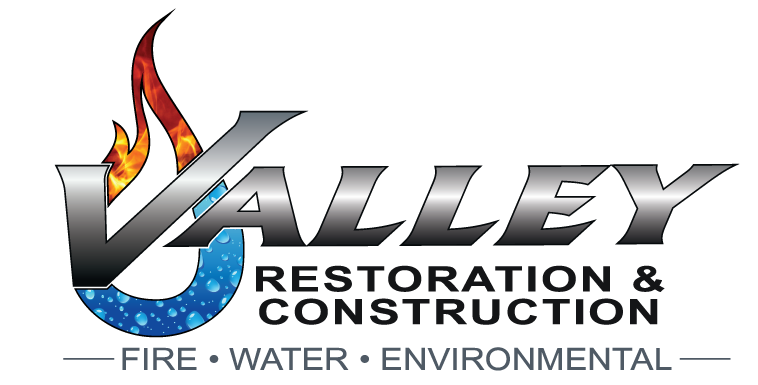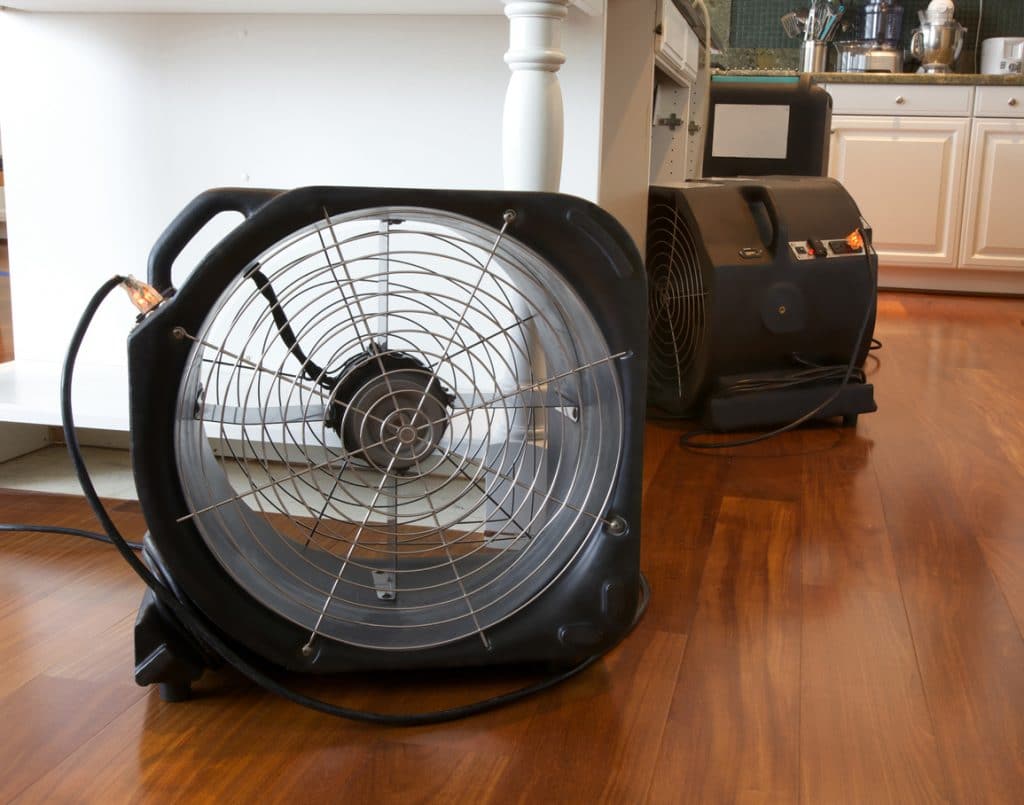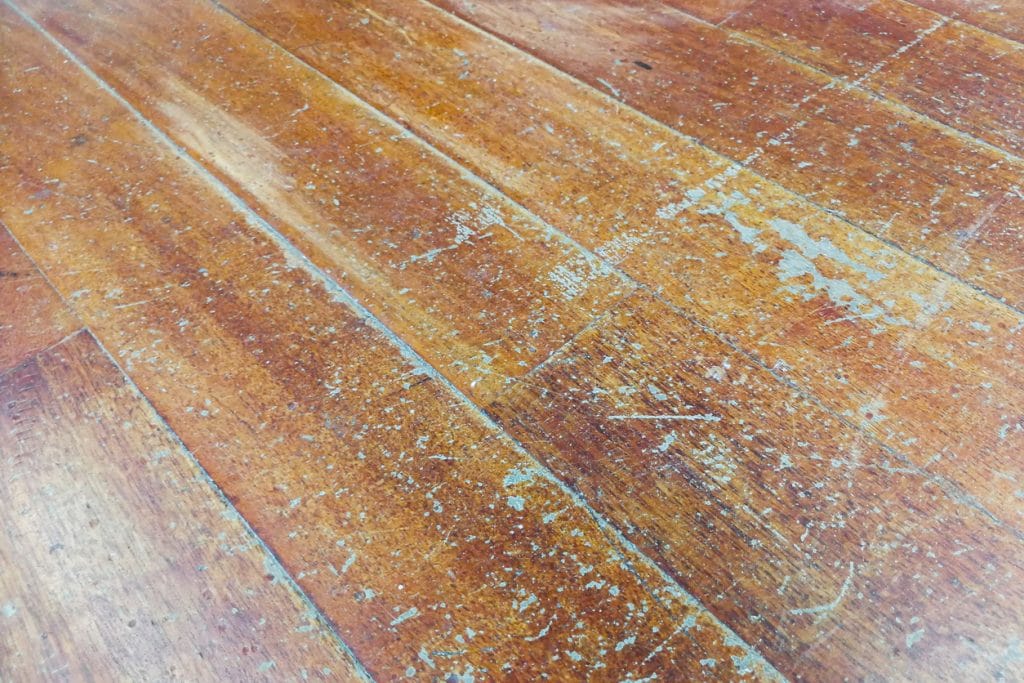Water flooding can cause a lot of damage to your house but is especially catastrophic when it comes to hardwood floors.
The only way to know the extent of the damage is to wait until the hardwood floors are dry. Then you can examine them and establish whether they need repairing or replacing.
What Causes Water Floods?
There are a number of ways water could damage your hardwood floors. Some of them you can anticipate and avoid, but others happen out of nowhere.
A hole in the roof could let in rainwater. Leaky pipes could burst. A toilet might overflow. An appliance like a dishwasher or washing machine could break, causing a mini-flood in your bathroom or kitchen.
During a house fire, the liquid used in fire extinguishers lingers in the area where it’s used and can cause damage to the floor.
Although we hope it never happens to us, there’s always the possibility of a hurricane or a storm crashing in and soaking everything in the house.
Even something as harmless as an aquarium can be trouble if someone knocks it over!
What Types of Water Will I Find During a Water Flood?
Specialists divide water spills into three categories: clean water, gray water, and black water.
- Clean water is the kind of water you could drink. It’s free of bacteria and any other harmful substances.
- Gray water is the water that runs through dishwashers, washing machines, showers, sinks, and so on. It might contain some pathogens, but it’s generally safe to handle.
- Black water is wastewater filled with pathogens and bacteria that comes from toilets and sewage systems. Sanitization is almost always required after a black water spill.
Depending on the type of water spill, the restoration company will evaluate the necessary restoration strategy.
What Should I Do If My Hardwood Floor is Flooded?
Find the Water Flooding Source and Stop It
In order to stop the water damage from getting worse, your first step is to find the source of the spill and stop it. For example, with a leaky pipe, you could shut off the water in the house and place a bucket and towel under the leak.
Move Furniture, Carpets, and Rugs off the Hardwood Floor
If you have furniture, carpets, or rugs on your hardwood floor, move them somewhere else. The carpets and rugs, in particular, will be soaked. The longer they stay on the hardwood, the more water will seep from them into the floor and damage it.
Dry Your Floor as Much as Possible
The first 24 hours are crucial for saving or limiting the damage done to your hardwood floor.
Unless you have an industrial dryer on hand, you’ll have to make do with things lying around the house. Use towels to soak up as much of the water from the hardwood as you can. If you have a dehumidifier, use it to take away the humidity and start the drying process. If it’s a windy day, consider opening up the doors and windows to let the air flow dry the hardwood.
Look for Mold
You will be amazed to learn that mold can start growing within 48 to 72 hours of water
flooding! If you don’t catch it quickly, it will settle and begin spreading, at which point you’ll have to call in professionals to deal with the resulting mold damage. Mold is pervasive and very good at hiding, but professionals will know where to look for it.
Don’t Sand the Hardwood before Checking the Equilibrium Moisture Content (ECM)
If your floors have water damage, you might be tempted to start the restoration process right away. But you absolutely should not sand hardwood until the moisture content has fallen to normal levels.
The best way to establish your moisture content is to take a measurement from a section of hardwood unaffected by the flood. This will tell you the ‘base’ or ‘normal’ measurement against which you will compare the flooded area. The Equilibrium Moisture Content (ECM) should be around 20%.
Once you have measured your affected area’s ECM, you need to wait for it to dry and get rid of the excess moisture before sanding it.
What Influences the Extent of the Damage?
Amount of Water during the Flood
The amount of water that ended up on your hardwood floor is crucial in determining the resulting damage. Three inches of water sitting on your hardwood will do a lot more damage than a quarter-inch-deep spill.
Amount of Time the Hardwood was Flooded
Another significant factor is how long the hardwood floor was flooded. If you were able to clean it up quickly, you could probably get away with minor repairs. However, if the hardwood remained underwater for more than 24 hours, the damage would probably be extensive enough to require replacing the floor entirely.
The Type of Hardwood
The type of timber on your floors will also determine the extent of the damage.
Hardwood floors are made from hardwoods like oak, maple, and ash. These woods are water-resistant because they are dense. The hardest woods are hickory and pecan, and they are more effective at withstanding water damage than oak, maple, and ash.
Pine, aspen, and cedar are considered to be “soft” woods. They are not as dense as hardwoods, and floors made from them will be easily damaged by water.
What Sort of Damage Can Hardwood Flooring Sustain?
There are several ways that water can damage your hardwood floor.
Cupping
Cupping is when moisture soaks into the edges of a wooden plank, causing the edges to expand and lift up and create a dip along the middle of the board.
Crowning
Crowning is the opposite of cupping. Moisture sets in the middle of the wood plank, causing it to bulge upward along the center of the board.
Staining
- Moisture and water damage can create black or white stains on your hardwood.
- Black stains are a sign that the water damage is extensive. They’re caused when water has infiltrated the floor and penetrated deep into the fibers of the hardwood.
- White stains signify that the water has affected only the wood’s finish. In this case, restoration is easier and the hardwood floor can usually be repaired rather than replaced.
Whatever Your Hardwood Damage, Valley Restoration and Construction Is Here for You
Valley Restoration and Construction has the expertise and equipment needed to repair and restore your hardwood floors from damage caused by water and flooding.
We have seen and restored all types of water damage on hardwood. We have extensive expertise and professional experience to save your floor, repair it, or replace it after a flood or severe water damage.


